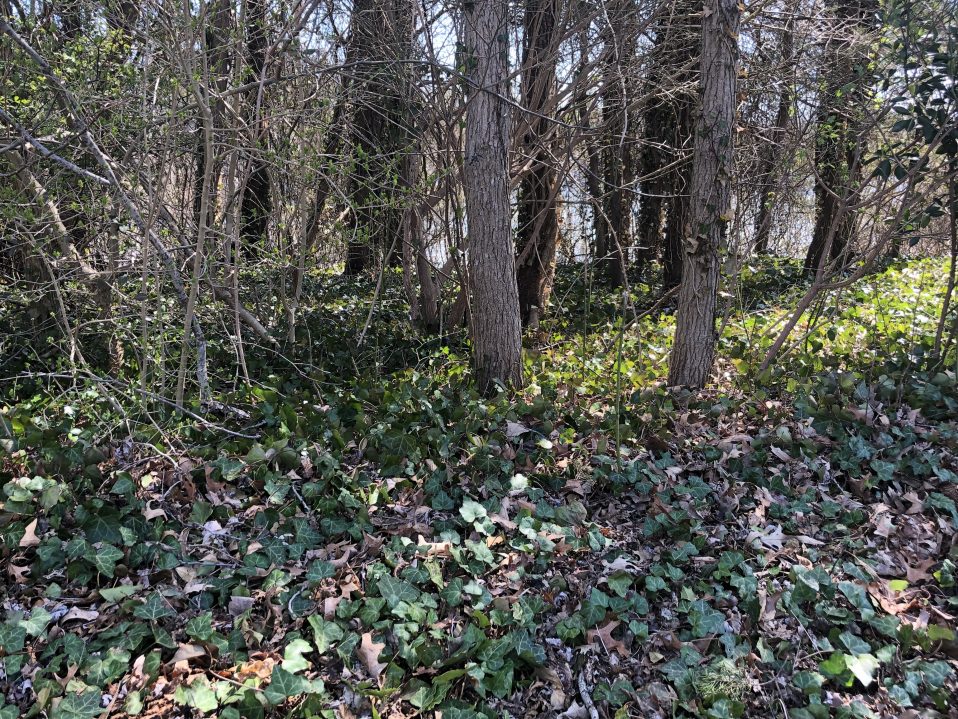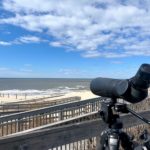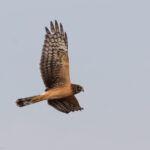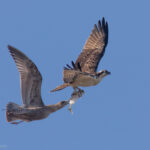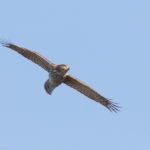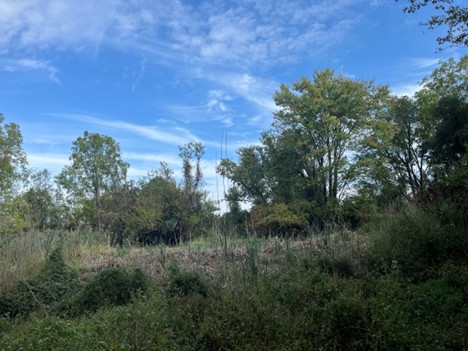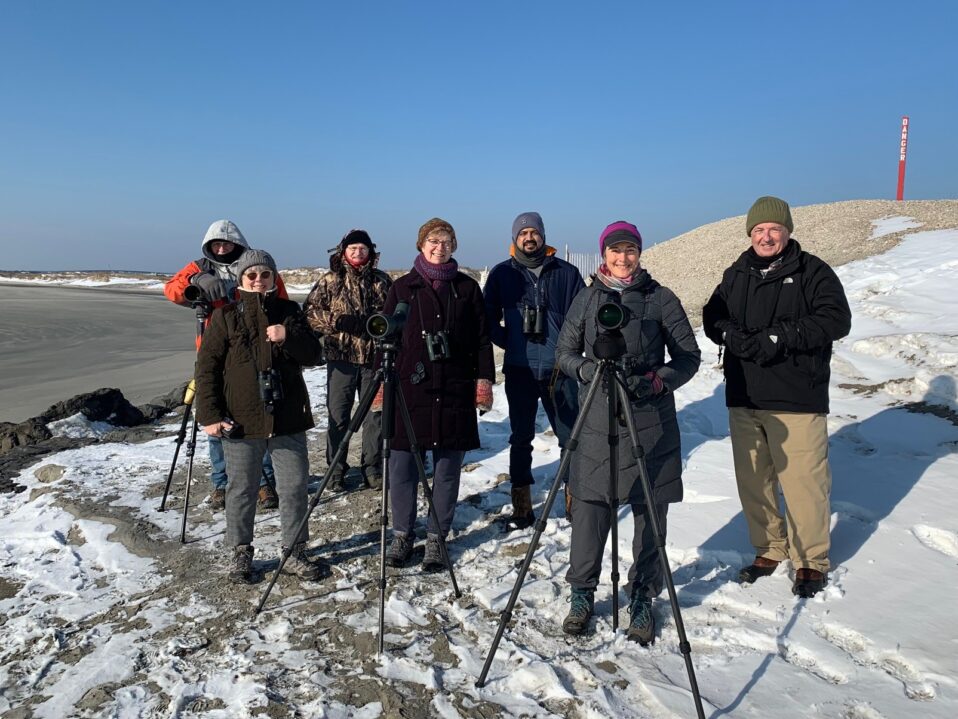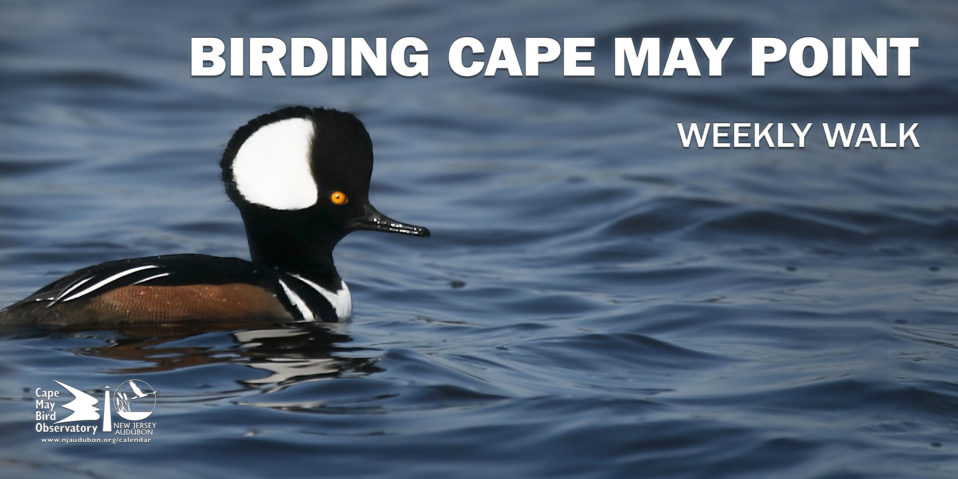Amid the Covid-19 crisis, New Jersey Audubon continues its commitment to conserve wildlife and habitat through the active management, restoration and enhancement of public and private lands throughout the state. The Lake Lily restoration project is just one example!
Lake Lily is a small and picturesque lake in the borough of Cape May Point. Historically the lake’s proximity to the ocean and bay made it a highly valued water source for the Kechemeches, a Native American Tribe that summered and hunted on the Cape. According to www.capemay.com, it is said that British sailors and pirates also utilized the strategic location of the lake, the most famous account involving the infamous Captain Kidd.
Similarly, this has made the lake a strategically important resource to birds and other wildlife that use the unique habitats of Cape May. Millions of migrating birds use this area to refuel as they continue their journey to their breeding and/or wintering grounds each year. The excellent sightlines of the lake also make it a popular place to view wildlife, often attracting groups of birders in pursuit of local rare bird sightings.
Maintaining this beautiful area has not always been easy. According to www.capemay.com, in past years the lake’s hydrology has been negatively altered by powerful Nor’easters, causing the populations of water lilies to die off. Additionally, non-native invasive plants have established themselves around the lake, pushing out native plants and reducing wildlife habitat quality. Despite all the challenges the lake faces, it is met with an equal or greater amount of support. Organizations like the Friends of Lake Lily, a non-profit group of citizens, have worked together with the borough of Cape May Point to fund and implement restoration projects around the lake.
In 2018, the Friends of Lake Lily and the Borough of Cape May Point teamed up with New Jersey Audubon and the U.S. Fish and Wildlife Service to restore habitat surrounding the lake. The objective of the Lake Lily Restoration project is to slowly remove non-native invasive plants that have degraded habitat associated with the lake while replacing those invasive plant species with beneficial native plants.
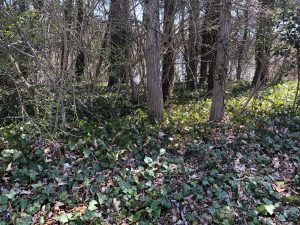
English Ivy chokes out native vegetation at Lake Lily. Photo by Danielle Bara
English Ivy (Hedera helix) is one example of a plant that had invaded the land surrounding the lake. This non-native invasive vine has formed dense ground cover in many areas, making it difficult for native seeds to sprout while strangling existing native understory plants. In addition, these vines have trailed up most of the trees surrounding the lake. Given enough time, these vines will strangle the trees and limit their access to sunlight and other resources.
The displacement of natives by non-native invasive plants is highly detrimental to the birds who use these areas to forage. Non-native invasive plant species often support very few native insects, which can disrupt the food chain. Birds are highly dependent on insects as a food source, especially during the nesting season as insects provide the right mix of proteins and fats necessary to produce and raise young. Any reductions in this food source means that birds will have to compete for limited resources and may produce less young or the young will be less fit for survival and their fast approaching independence.
Now what about the fruit produced by non-native invasive plants? Studies have shown that non-native fruits provide some macronutrients but not to the same standard as native plants. For example, the non-native invasive vine Porcelain Berry (Ampelopsis brevipedunculata) produces numerous berries during fall when birds are migrating south to their wintering grounds. The berries are high in sugar but provide a lower lipid content than comparable native berries that are fruiting during the fall migration. The high sugar content gives migrating birds a quick burst of energy but does not provide the essential protein and fats necessary to fuel the long journey many birds make during migration.

Porcelain Berry overtaking the fence-line at Lake Lily 2019. Photo by Danielle Bara
These combined effects ultimately create a “food desert,” making an area that is invaded by non-native invasive plants an effective dead zone for birds and other wildlife, even though the area has plants, trees and shrubs and may look suitable to the untrained eye. This decrease in forage quality extends to pollinators as well, as the nectar within non-native plants is often inferior to those within native flowers, while the plants themselves do not support beneficial native insects in their larval forms.
The propensity for these invaders to overwhelm an area and affect the function that native plants provide is clear, but the structure of habitat is also important as wildlife have co-evolved to rely on both the function and structure of habitat. Invasive plants can prevent important understory shrubs from developing, reducing the places shrub nesting species can raise their young. In some cases, non-native species can create “nesting traps” for nesting birds that may mimic a familiar structure but opens the nest to predators due to a lack of adequate cover.
New Jersey Audubon is working to reduce the impact non-native invasive plants have at Lake Lily by removing vines that are climbing up the trees and thinning dense stands of privet (Ligustrum spp.), followed by replanting the restored areas with native plants. As of April 2020 , New Jersey Audubon has planted Sweet Pepperbush (Clethra alnifolia) and Red Chokeberry (Aronia arbutifolia), two native shrubs that together support a variety of insects, provide a great nectar source for our pollinators, and provide wildlife with nutrient-dense fruit. With time and maintenance, these shrubs will grow and spread to fill in these spaces, providing resident and migratory wildlife with vital resources while improving the natural aesthetics of Cape May Point.

Porcelain Berry removed from fence-line at Lake Lily by NJA 2020. Photo by Danielle Bara
Blog By Steven Garcia, Stewardship Technician & Fightn’ Femelschlager, NJA Stewardship Department
To support NJA Stewardship Department’s work for overall habitat restoration, species recovery and natural resource protection throughout NJ, including work associated with young forest projects, you can donate to The Fightn’ Femelschlagers participating in the 2020 World Series of Birding at: https://worldseriesofbirding.org/teampage.asp?fundid=1439#.XqxKg6hKjIV




